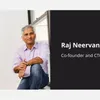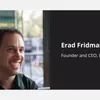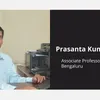The name Sabeer Bhatia needs no introduction. The veteran tech entrepreneur had co-founded Hotmail, the world’s first free web-based email service in 1996 along with Jack Smith in Mountain View, California. Hotmail was pivotal to the way people communicated and interacted, as it symbolised "freedom" from ISP-based email, and gave users the ability to access one's inbox from anywhere in the world.
It had over 10 million subscribers in the late 90s, when the internet population was just close to 40 million. The startup was acquired by Microsoft in 1998 for over $500 million.
Since then, Sabeer, now 54, has been advising startups, investing in them, and mentoring budding entrepreneurs, but last year, after nearly two decades, Sabeer announced the launch of his new platform - ShowReel, a video resume platform that helps people with upskilling and employment opportunities.
While he helped ubiquitous access to email with Hotmail, with ShowReel, Sabeer aims to tap the internet consumer’s appetite for all things video and visual – for socially useful purposes like building professional connections and employment, especially as the pandemic plunged billions into unemployment.
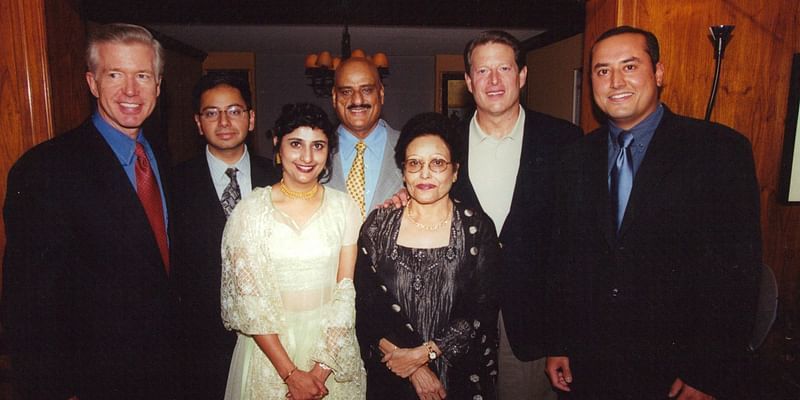
Why not web-based emails?
Sabeer believes any idea should be aimed towards changing the world. And that was how he and Jack viewed the creation of their web-based email when they built Hotmail.
“Since the web was really new in 1996, I had an idea of doing a web-based database, where we could store all kinds of information, records etc. And while we were building this, our company Firepower had put a firewall around our corporate internet. It was then that it occurred to us, what if we made the email available to us on the web? This was the genesis of Hotmail,” reveals Sabeer.
Today, over three billion people use web-based email. “It was the simplicity of the idea that helped create a revolution,” adds Sabeer.
According to Sabeer, they were just two kids who had an idea, so this meant they had to raise money. “I went around knocking on doors of venture capitalists asking them for money. Many of them turned us down. In those days, business was usually done by more established people. However, Draper, Fisher, and Jurvetson (an American venture capital firm) liked our story and our passion and vision. The goal of entrepreneurship, in the tech world, should never be to just make money. The idea is to make a difference to the world. We got $300,000 to start Hotmail,” says Sabeer.
Today, as a “senior citizen of the entrepreneurship world,” he feels founders have to believe in the end vision, know where they want to be, and finally, know that playbook, and then they can change the world.
The Microsoft acquisition
At the time, Microsoft had a problem providing internet to the then 2.9 million Microsoft Network (MSN) subscribers, and the base was touching 5 million. That is when they noticed Hotmail. “They called us to understand how we provided email to five million subscribers,” says Sabeer.
It was a business relationship that turned into an acquisition. “That is the beauty of the Valley, innovation really doesn’t come from the bigger giants but from the small ones that think of ideas outside the box,” adds Sabeer. After working at Microsoft for a year, Sabeer continued to do different investments, and focused on startups.
For Sabeer, his tech journey however started way before Hotmail or its acquisition to Microsoft. It had started way back during his school days. Originally from Bengaluru, Sabeer’s mother was working in a central bank, and his father, an ex-army official, was working at Gas Turbine Research Establishment in Bengaluru.
Bangalore boy who loved mathematics
“We grew up in the cantonment area in Cooke Town, St Thomas Road. I went to school at St Josephs, and that schooling gave me a great base and education. But what made me different from the others was that I would always ask several questions, and this was specially true for Mathematics. I would always look at different and shorter ways of solving a problem, ” recollects Sabeer.
According to him, it is something missing in Indian education today, as he feels Indian education is based on rote and repetition and not so much on enquiry.
“In retrospect, thinking of doing different things and differently was what helped create innovations and breakthroughs. I loved thinking about things, and the logic of mathematics. I hated subjects that just needed me to learn hard. I didn’t need to remember anything for mathematics, I could derive things from first principles, I had to use my mind, and things logically made sense. You had to think through the problem, it wasn’t a memory game. mathematics fosters independent thinking,” he adds.
While Sabeer’s mother wanted him to be a doctor, Sabeer was very sure he disliked biology. He was always sure that he wanted to be an engineer, and this led him to join BITS Pilani.
He even ended up pursuing two degrees simultaneously - physics and electrical engineering. “A couple of my friends had gotten admitted to MIT, so I applied too and then to Caltech (California Institute for Technology) for a transfer. I didn’t get into MIT, and Caltech sent me the wrong application after my first year. They sent me a graduate application from, and not the undergrad one!” laughs Sabeer.
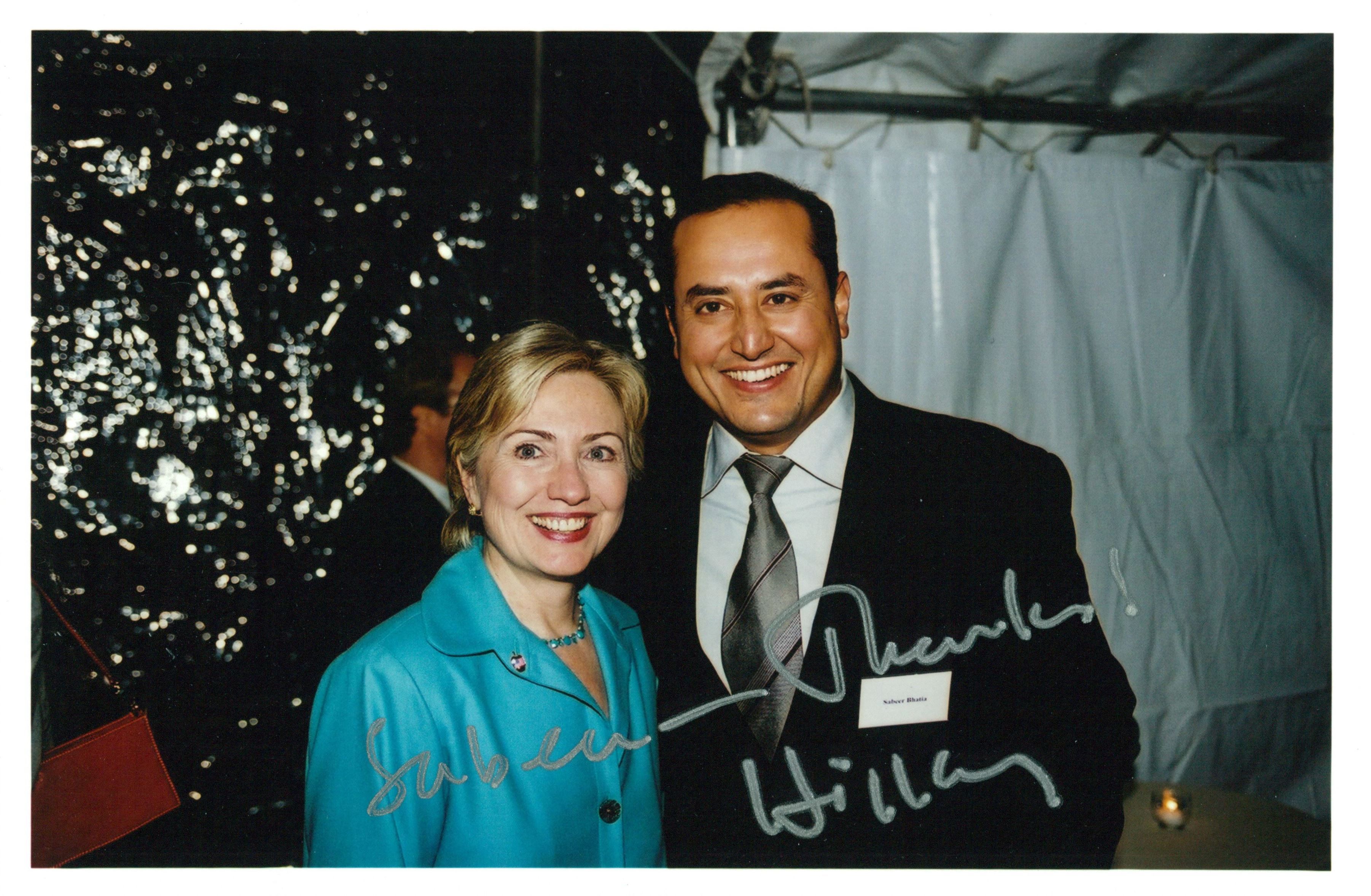
Sabeer Bhatia with Hilary Clinton
The phone call that changed it all
After a year, Caltech sent Sabeer an undergraduate transfer application form and the application fee of $40 was waived. “In the 90s, this is a big deal,” adds Sabeer. But he nevertheless had to complete a physics, chemistry, and mathematics test.
A professor at BITS Pilani oversaw the three tests for Sabeer. “I realised then how tough mathematics actually was. I couldn’t finish the test, and I’d assumed that I would simply get through!” exclaims Sabeer.
During this time, he went to the Bhabha Atomic Research Centre (BARC), Mumbai, where one evening, Sabeer got a phone call at his friend’s, saying that Sabeer had gotten through California. “I went to my friend's place, and called my father who told me that I had gotten into Caltech with a 72 percent aid,” says Sabeer.
This was the late 80s and early 90s, it meant getting RBI funds for the remaining 28 percent. However, the RBI had rejected their request due to rules and restrictions. This almost killed Sabeer’s chances to go to Caltech.
“My father then wrote a letter to Caltech and explained the issue, and asked for an increase in aid from 72 to 75 percent, so that the remaining could be funded by the RBI and other banks. Within 24 hours, Caltech increased the aid to 75 percent,” says Sabeer.
Topmost in the world
On the first day at Caltech, Sabeer finally understood how he got through the university even after a bad test.
“A professor called Ricardo showed me my mathematics test, and said to me that I was the only one in the world who got a 62 out of 100, and the next highest was 42,” reveals Sabeer.
It was at Caltech that Sabeer had the push to build and learn technology in different ways. He says the university has the best of students and as the classes are small and intimate, and professors are humble as well, you can easily interact.
“There are some classes with four students and one professor. But it was incredibly difficult, as the professors are on a different level. For example, I had taken a course in basic theory of transistors. The first lecture the professor comes in and says - solid state electronics is the diffusion equation. I had no clue, and then I realised that the last chapter in the book is about diffusion equations. They expect you to read everything before you come to class. There is no spoon feeding,” says Sabeer.
PhD to entrepreneurship
This, Sabeer says, formed the base to further education at Stanford. While he wanted to do a PhD in Stanford, he had taken a course on Business for Electrical Engineers, where he was told about startups.
“It was the inspiration for a startup. We had people like Vinod Khosla and Steve Jobs come and talk to us, and tell us how they started their companies. And that inspired me to be an entrepreneur instead of doing a PhD,” says Sabeer.
After his masters in the early 90s, Sabeer went to work for Apple Computers, and while he was at Apple, he got the chance to work for a startup called Firepower Systems. Sabeer worked at Firepower System until 1996. It was then that he teamed up with Jack Smith, who is a great programmer, and went on to create history with Hotmail.
“Great companies that exist today are because they are meant to be. They fulfil a need. And these simple ideas are breakthroughs as they think of fundamental problems in a different way. For me, the essence of entrepreneurship is to find the right problem to solve, that also changes the world, and then you succeed,” says Sabeer.
Citing Google, Sabeer says, when the internet giant first started, they focussed on solving the problem of search better than everybody else. Today they are worth almost $2 trillion.
Solve a larger problem
Showreel, Sabeer says is his way of looking at a problem differently. During the pandemic, he realised videos are going to be a powerful medium of communication and content consumption.
“It got me thinking, can we make videos to help over a billion people to find employment,” adds Sabeer.
He says the point of ShowReel is to help impact lives with the help of technology. A simulation of offline human interactions in the virtual world, it aims to empower people to achieve their truest potential by democratising free access to mentors like Sabeer Bhatia himself, and ultimately enabling employment and upskilling opportunities for job seekers across the globe at leading companies.
Advising techies, he says, “The idea is to look at it from different ways and angles. It isn’t about using the latest technology or code, it is about how you solve a problem and fundamentally change the way people view a particular problem and issue. Entrepreneurship is about finding a solution and tech is about that, keep yourself updated on what is happening in the world around you.”
Edited by Anju Narayanan



